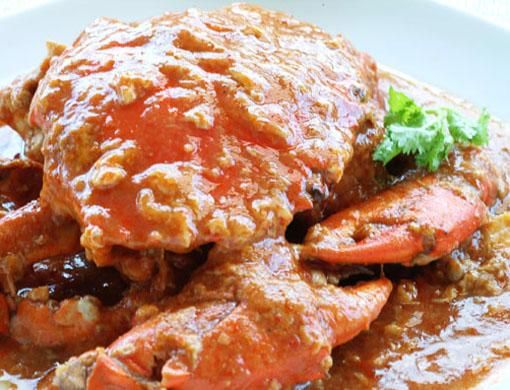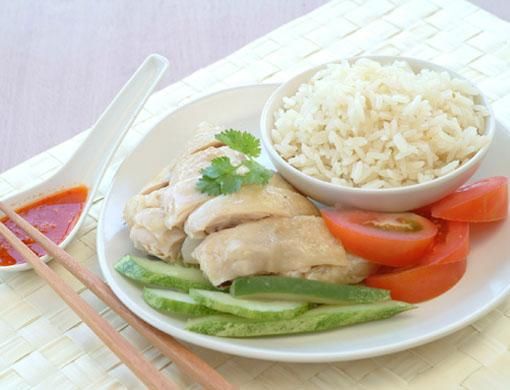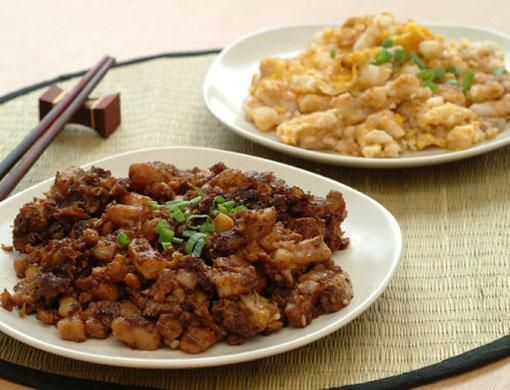With my first bite, I knew I was in trouble.
The crisp, chargrilled, wholemeal bread slices yielded to a moist eggy jam, rife with coconut and pandan leaf flavours, and sandwiched with lashings of cold butter.
Love at first bite would be understating it. Addiction is more like it.
After months of denying myself desserts, I succumbed to the kaya toast.
We landed in Singapore on a rainy morning on an assignment to eat our way through the World Gourmet Summit (tough job, I know, but someone's got to do it).
The promised nirvana of a snooze-fest in the hotel room was still a few hours away.
Hameem, our local guardian for the next few days, wisely decided that what his grouchy sleep-deprived charges needed was a chow down at the Raffles Hospital Hawker Centre. And he was right.
Get your fill
The sensory overload of a Singapore hawker centre in the morning is like a double espresso shot, injected intravenously.
Who can sulk when S$5 (Dh13.50) gets you a basket of freshly steamed dim sum, a steaming bowl of Cantonese porridge or a couple of sizzling roti prata, washed down with the freshest-tasting tropical-fruit juices.
You just got to wake up and smell the kopi (coffee), my friend. Or chomp your way through a stack of kaya toast, as I did.
It's little wonder then that Singapore is the happiest country in Asia. You might wonder why. The rents can be as scary as Dubai's.
Good education is equally expensive. People live in perpetual fear of the city's law enforcement — there are on-the-spot penalties for everything from littering and public dancing to selling chewing gum or smoking cigarettes that are not purchased in the city (which earned it the title of Singapore, the Fine City).
And the tropical weather isn't particularly comforting.
But the food is where it's at. Along the way, Singapore has packaged many more cultural attractions and family-themed entertainment, but make no mistake, food is what makes it uniquely Singapore.
Tantalising treats
Kaya toast was my first breakfast in Singapore. Little did I know that this freakishly clean and well-run city hid many such tantalising treats in its folds, designed to lure the most disciplined dieter on to the path of no return.
Helpful little bakeries and coffee houses all over Singapore kept feeding my addiction to kaya toast.
The best by far was at the Ya Kun Kaya Toast, a 64-year old enterprise that also peddles jars of kaya and has branches all over the city.
It's a great souvenir from this gourmet city.
The best way to tell a local from a tourist is to check out the way they eat their kaya toast.
Singaporeans deftly pick the pieces up with a toothpick and slurp down a side order of soft-boiled eggs with the mandatory tint of soya sauce.
This is usually washed down with teh tarik or teh kopi — Singaporean-style foamy thick tea or coffee made with evaporated milk.
If you are feeling adventurous or nostalgic about your schooldays, you can even try your coffee with a dash of Milo.
For some reason, this energy drink, in its various incarnations, is very popular in the city (you can also try it with ice-cream).
Beautiful city
Coming back to me, rainwashed Singapore looked much more beautiful after that first breakfast.
We beamed approvingly at The Civic District's refurbishment of its heritage architecture.
This is a clutch of colonial-era buildings which have been spruced up to house museums, art galleries and cafeterias, anchored around the Raffles landing site.
The landing site overlooks the Singapore River and is the starting point for bumboat (yes, that is what they are called) cruises.
Just like the abras of Dubai, the bumboats hark back to the days when Singapore was a fishing village.
The bumboat cruise down the river is like a snapshot of 150 years of history.
There are the shiny skyscrapers of the Financial District, the former warehouses now converted into chic restaurants and bars of Boat Quay, colonial buildings and grand old bridges.
Merlion everywhere
The bumboat also circles the Merlion Statue. If Singapore had to have a national animal, the Merlion would have to be it.
You will see its form embossed on everything: keychains, magnets, T-shirts and other tourist tat.
The family favourite, however, has to be the edible chocolate Merlions, available at most supermarkets.
We had lunch in the shadow of yet another Merlion at the Palm Beach Seafood Restaurant, housed in the One Fullerton Building.
The fish, cooked in a style that was a delightful mix of Malay and Chinese, was so fresh it practically leapt off the plate.
But the piece de résistance was the chilli crab.
There is no elegant way to eat Singapore chilli crab.
All you need is an apron to save your clothes as the delicious juices squirt out with every bite and there is a willingness to use your hands to get at the best bits of crab flesh.
The best places in Singapore to hack your way into these crustaceans are Long Beach restaurants (supposedly the ones which created that other dish we all love, pepper crab) and the intriguingly named No Signboard.
Savour another treat
While chilli crab hits the right spot for fire eaters such as me, another uniquely simple and delicious Singapore delicacy is Hainanese chicken rice.
This is, at its basic, rice, richly flavoured with chicken broth and served with steamed or roasted chicken on the side.
Of course, my top tip to eat a good meal is to simply ask Singaporeans and get their recommendations.
Singaporeans are quite friendly and eager to share their knowledge of food. Language might be an issue, though.
The carrot cake our friend ordered had no carrots and no cake. But don't be disappointed, because it's delicious.
Singapore's popular breakfast dish, carrot cake, is an omelettey medley of eggs, garlic and white radish, which can be sweetened and browned with soya sauce.
Similarly, the roti prata has little in common with the North Indian bread of almost the same name.
The oily, chewy roti prata is made with eggs (vegetarians take note) and served with curry.
You could also try the roti john, another uniquely Singaporean delicacy that comprises bread filled with spiced mince and onion.
Menus reflect culture
In many ways, Singapore's menu cards reflect the city's fascinating cultural mix.
While the majority are Chinese (75.2 per cent), Malays (13.6 per cent) and Indians (8.8 per cent) are significant minorities. And nearly everyone can find something to enjoy.
Vegans are just as pampered, with many a South Indian and Buddhist restaurants. And there are plenty of healthy choices you can make.
After so many days of indulgences, the karmic cycle was complete when we went to the fish spa at Sentosa.
This is where you dip your feet into tanks filled with hundreds of Turkish spa fish so that they can nibble away the dead skin.
Not for the squeamish or the ticklish. But it's one place in Singapore where the eaten finally get to eat.
Keep in mind:
Trip tips
Here are the posh alternatives to the hawker centres:
Sunday brunch at the PS Café on Dempsey Road
Tucked away in a leafy bohemian enclave, brunch at the PS Café is a languid affair. The limited menu boasts of tasty, affordable items and the most decadent cakes.
Be prepared to spend at least a couple of hours soaking in the delightful ambience and then round it off with an exploration of the nearby shops selling Indonesian antiques. Expect to pay S$50 (Dh135) for a meal for two.
Set lunch at My Humble House in the Esplanade Complex
This is one of the three restaurants in Singapore which topped the 100-best-restaurants-in-the-world list by the UK'S prestigious Restaurant magazine.
There is nothing humble about this restaurant, though, which prides itself on giving traditional Chinese cuisine a modern twist.
From the achingly chic interiors to the poetic menu (“Snowdrops in the forest'' anyone?), this is a feast for all your senses.
Take part in the Esplanade Tour before or after lunch and don't forget your camera. This is one of Singapore's most stunning pieces of modernist architecture.
Landmark: Merlion's past
The Merlion in Singapore is as ubiquitous as pigeons are in other places. Only, it is mythical.
Designed by Fraser Brunner, the Merlion's lion head represents the lion spotted by the Malay prince Sang Nila Utama when he rediscovered Singapura in AD11.
Its fish tail symbolises the ancient city of Temasek (“sea'' in Javanese), which was what Singapore was called before the prince renamed it Singapura (meaning “lion city'' in Sanskrit).















